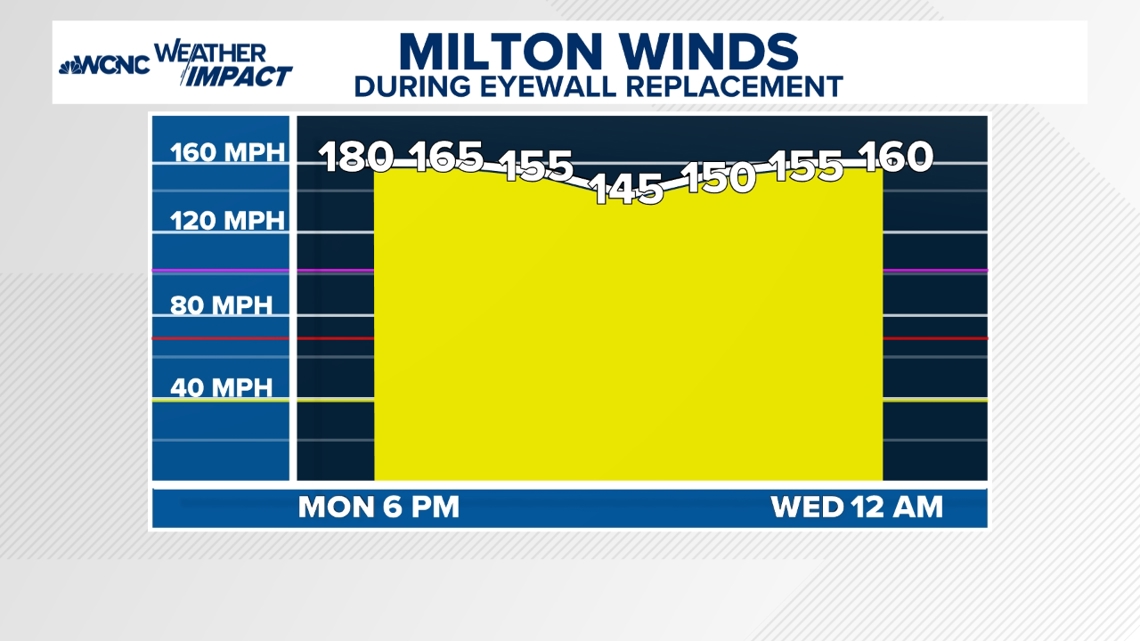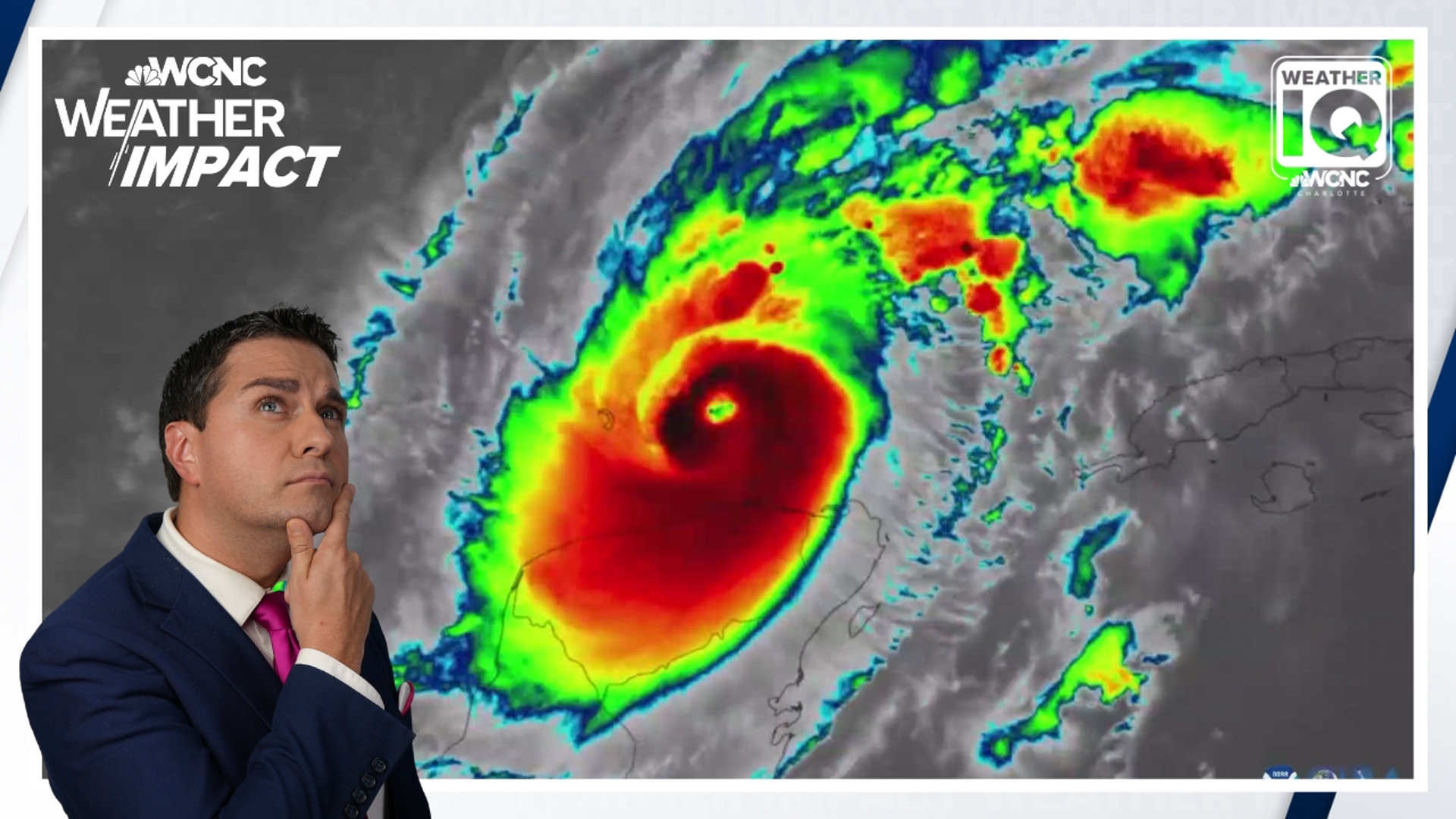CHARLOTTE, N.C. — Hurricane Milton was a historic storm, and one of the strongest on record. It also showed a textbook example of a phenomenon called the eyewall replacement cycle. Let's raise that Weather IQ.
Why this happens
A well-defined eye is the sign of a powerful hurricane. The strongest winds and heaviest rain surround this area, which means it can be volatile, forcing it to go through changes.
The eyewall replacement cycle is simply the process in which hurricanes develop a new eye.
The eyewall is made up of strong thunderstorms. Intense tropical cyclones like Milton can develop an outer ring of thunderstorms that slowly moves inward. This robs the inner eyewall of its needed moisture and momentum, causing it to collapse and be filled in.
During this phase, the hurricane is weakening -- but only temporarily.
This process can take anywhere from six to 54 hours to complete, but on average takes about a day or so.
Referencing Milton
During Hurricane Milton's eyewall replacement, the monster Category 5 went from its peak 180 mph sustained winds to 145 mph. Once the new larger eyewall took control and eroded the clouds, Milton re-intensified back up to 160 mph.


A new expanded eye can allow the hurricane to grow in diameter, spreading out the storms wind field, impacting more people.
This eyewall replacement cycle doesn't happen for every hurricane, but is common for major Category 3, 4 and 5 hurricanes.
The only advantage
Since going through an eyewall replacement will weaken a hurricane, sometimes if this process starts before landfall, it can weaken a storm down a category or two. Hurricane Katrina dropped to a strong category 3 before landfall as it was going through its second eyewall replacement.
Milton hit some wind shear and was also trying to reorganize its eye before landfall. This helped bring the storm from a category 5 to a category 3 storm. However, even when the winds weaken, the storm surge stays nearly the same.
Contact Chris Mulcahy at cmulcahy@wcnc.com and follow him on Facebook, X, Instagram and TikTok.

